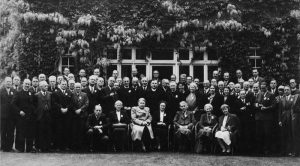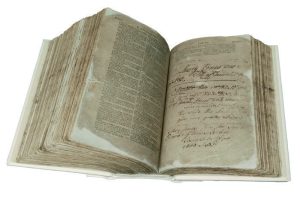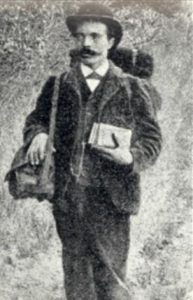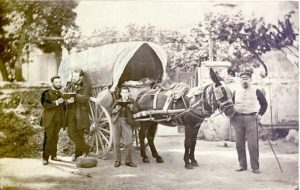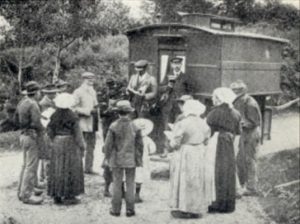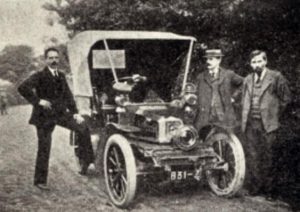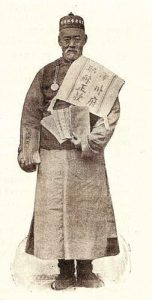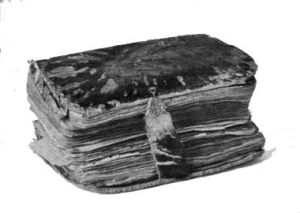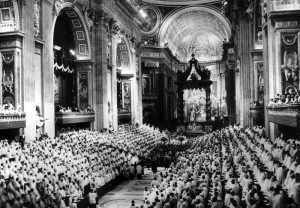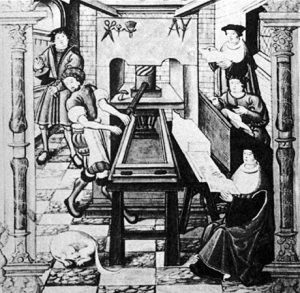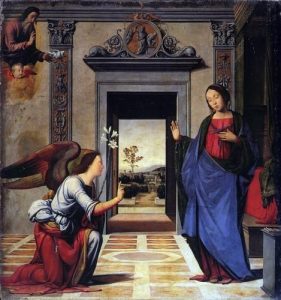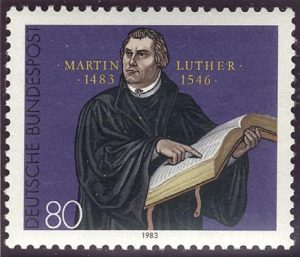Mary Jones and her Bible
Mary Jones was a young country girl in Wales (1784-1864). She had learnt to read in her Sunday school and dreamed of having a Bible written in Welsh. At the age of 15, after having put money aside for a period of six years, she set out to walk over forty kilometers to Bala, where she hoped to buy one. She did indeed get her Bible, which was given to her by the pastor, Charles Thomas. He was impressed by her determination and suddenly realised that there was a great shortage of Bibles and that millions of poor people could not afford to have a copy. He went to London, where he mobilised a large number of like-minded people. This was the beginning of the first Bible Society.
The Bible Society movement was born. The first Bible Society was the British and Foreign Bible Society (BFBS), founded in 1804 ; its aim was to “translate, print and distribute the Bible, without any notes or commentary, throughout the British Isles and the whole world”. It workedtogether with Protestant missions and helped those who were translating the Bible in China, India and on the African continent. In 1804, the Bible had only been translated into 80 languages. By 1954, the BFBS and other Bible Societies had managed to translate it into a thousand other languages.
Soon there were other European Bible Societies, in Switzerland (1804), Scotland (1809), Finland, Hungary (1812), Holland (1814), Sweden (1815) and France (1818).
147 national Bible Societies grouped together in 1946 to form the United Bible Societies – today they are working in nearly 200 countries.
The pedlars
In the middle of the 19th century, the Bible Societies used pedlars more and more to distribute the Bible. By 1900, the BFBS employed 1000 pedlars in Europe and beyond. These Bible pedlars were not like foreign missionaries ; they were of the same nationality as the people they talked to, they knew them well and shared the same language. They travelled tirelessly through town and country, sometimes to the remotest of places, going from house to house to distribute their Bibles.
The Bible Societies contributed to the growth of Protestantism
The Bible is at the centre of Protestantism. This underpinned the aim of the Bible Societies : to make the Bible accessible to people in their own language and at an affordable price. Importance was given to the Protestant principle of individual Bible reading and this became possible for more and more people. The pedlars distributed the Bible and encouraged people to read it – this led to a strengthening of the Protestant religion at the expense of Catholicism, throughout the 19th century.
The Deuterocanonical books were not included in Protestant Bibles during the 19th century
The Deuterocanonical books were books in the Old Testament written in Greek and do not form part of the Jewish canon. They can be found in the Greek version of the Old Testament, the Septuagint. They were only accepted in the Catholic canon in the 16th century, during the Council of Trent – (in Greek “deuteros” means second and in French the Apocrypha is described as “les livres deuterocanoniques”).The Reformers considered the Apocrypha to be of interest, but not necessarily the Word of God. When the 16th century Protestants translated the Bible, they placed these books at the end, after the Book of Revelation and classified them as the “Apocrypha”, which means “hidden”.
In the 19th century the Bible Societies’ aim was to distribute as many copies of the Bible as possible at the lowest possible price. Cost was one reason why the British Bible Society eventually omitted the Apocrypha from their Bibles in 1826. The other reason was that the Revivalists thought that only God’s Word should be in the Bible and nothing else. As this Society distributed the most Bibles at the time, in spite of opposition from the Paris Bible Society, the Apocrypha came to be omitted more and more from Protestant Bibles during the course of the 19th century.
The Second Vatican Council : a turning point in the 20th century
At first the Roman Catholic Church welcomed this new enthusiasm for distributing Bibles. In Germany, bishops and priests supported the setting up of the Central Bible Society of Prussia. However, Rome soon began to criticise the movement. In 1824 Pope Leo XI attacked the British Bible Society who “endeavoured, at all cost,s to translate Holy Scripture into every native language and distorted it at the same time”. A decree was issued in 1864 attackingthe British Bible Societies, calling them “socialists, communists and secret societies”.
Nevertheless, a century later Vatican II issued an encyclical, Dei verbum, encouraging Bible reading, which up to then had been considered as “Protestant” and it advocated collaboration with the “separated brothers” to produce Bibles which were acceptable to all. A joint document, with translation guidelines, was issued by the Roman Catholic Church and the Universal Bible Societies.
In 1875, after a period of 15 years spent working together, the TOB, an ecumenical translation of the Bible into French, was produced worldwide for the first time. Protestants and Catholics had, for the first time, both edited The Biblical text, notes and commentary. In 2010 the 6 books of the Apocrypha, which had been used by the Orthodox Church for centuries, were included in the third revision of this translation.
The Bible exhibitions of the Alliance Biblique Française
Since 1950, the Alliance Biblique Française (French Bible Society) has been organising Bible exhibitions to explain to the general public how the Bible came into being and the way in which it has been handed down. The Alliance Biblique Française is not affiliated to any particular church and is careful that its exhibitions are truly inter-denominational. They update these exhibitions regularly and follow the latest trends in museography. The ABF exhibition called “The Bible, legacy of humanity” was inaugurated in February 2010 at UNESCO. Using inter-active methods and multimedia techniques, it gave a cultural view of the Bible, how it came into being and the way in which it was handed down as well, as its influence on cultures throughout the world.
Distribution
The Bible Societies who belong to the Universal Bible Societies are not alone in distributing the Bible, but they are the biggest distributors in the world. In 2009 they distributed 29 million Bibles, 11 million New Testaments and 390 million extracts or Bible Reading Notes. In 2010 the Brazilian Bible Society alone distributed half of these publications.
New translations : TOB, LSF, BdJ
In 2010 there were 2 new translations, the work of the French Bible Society, the editorial branch of the Alliance Biblique Française :
- The TOB, the third revision of the ecumenical translation of the Bible which first appeared in 1975. This new edition included the 6 books of the Apocrypha, which were already included in Bibles of the Orthodox Church.
- The Gospel of Luke in French Sign Language (LSF), in DVD format. 100 people worked on this for over 3 years and 90 new signs were included in this version.
In 2011 the “Bible des Jeunes” (Ze Bible)was printed. It was a Bible which included notes aimed at young people who were normally unaccustomed to reading the Bible. The Bible text was in everyday French and also included explanatory notes, special information sheets on characters in the Bible and other useful details.

